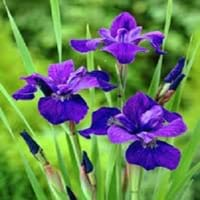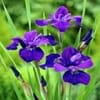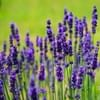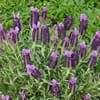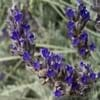Life Span
Perennial
Perennial
Type
Perennial
Bulb or Corm or Tuber
Origin
Eastern Europe, Russia, Siberia
Hybrid origin
Types
Not Available
boissieri , cupanii , hungaricum , kesselringii
Number of Varieties
Not Available
Habitat
Grassland, Pastures, Swamps
Temperate Regions
USDA Hardiness Zone
3-8
Not Available
AHS Heat Zone
9-1
Not Available
Sunset Zone
A2, A3, 1a, 1b, 2a, 2b, 3a, 3b, 4, 5, 6, 7, 8, 9, 10, 14, 15, 16, 17, 18, 19, 20, 21, 22, 23
21,22
Habit
Clump-Forming
Clump-Forming
Flower Color
Blue Violet
Purple, Violet
Flower Color Modifier
Bicolor
Bicolor
Fruit Color
Not Available
Not Available
Leaf Color in Spring
Green
Green
Leaf Color in Summer
Green
Light Green
Leaf Color in Fall
Green
Several shades of Green
Leaf Color in Winter
Light Green
Light Green
Leaf Shape
Long Narrow
Long Linear
Plant Season
Summer
Spring, Fall
Sunlight
Full Sun, Partial Sun, Partial shade
Full Sun, Partial Sun
Type of Soil
Clay, Loam, Sand
Loam
The pH of Soil
Acidic, Neutral, Alkaline
Acidic, Neutral
Soil Drainage
Average
Well drained
Bloom Time
Early Summer, Summer
Late Summer, Early Fall
Tolerances
Drought
Drought
Where to Plant?
Ground
Ground
How to Plant?
Seedlings
Divison, From bulbs, Seedlings
Plant Maintenance
Medium
Medium
Watering Requirements
Keep the ground moist but not water-logged, Requires regular watering, Requires watering in the growing season
Keep ground moist
In Summer
Lots of watering
Lots of watering
In Spring
Moderate
Moderate
In Winter
Average Water
Average Water
Soil pH
Acidic, Neutral, Alkaline
Acidic, Neutral
Soil Type
Clay, Loam, Sand
Loam
Soil Drainage Capacity
Average
Well drained
Sun Exposure
Full Sun, Partial Sun, Partial shade
Full Sun, Partial Sun
Pruning
Remove damaged leaves, Remove dead leaves
no pruning required
Fertilizers
All-Purpose Liquid Fertilizer
All-Purpose Liquid Fertilizer
Pests and Diseases
Red blotch
Dry root rot, Pest Free
Plant Tolerance
Drought
Drought
Flower Petal Number
Single
Single
Foliage Texture
Medium
Coarse
Foliage Sheen
Matte
Glossy
Attracts
Butterflies
Whiteflies
Allergy
Not Available
Poisonous to grazing animals
Aesthetic Uses
Beautification, Bouquets, Landscape Designing, Showy Purposes
along a porch, deck or patio, Borders, Mixed Border, small hedge
Beauty Benefits
Not Available
No Beauty Benefits
Environmental Uses
Air purification
Air purification
Medicinal Uses
Not Available
anti rheumatic, cathartic
Part of Plant Used
Flowers, Leaves
Root
Other Uses
Decoration Purposes, Showy Purposes, Used as Ornamental plant
Showy Purposes
Used As Indoor Plant
Yes
No
Used As Outdoor Plant
Yes
Yes
Garden Design
Cutflower, Feature Plant, Foundation, Mixed Border
Container, Cutflower, Foundation, Lawns and Turf, Mixed Border
Botanical Name
IRIS sibirica 'Caesar's Brother'
COLCHICUM 'Lilac Wonder'
Common Name
Siberian Iris
Hybrid Autumn Crocus, Hybrid Meadow Saffron
In Hindi
Caesar's Brother Siberian Iris
meadow saffron
In German
Caesars Bruder Sibirische Iris
Herbstzeitlose
In French
Frère Iris de Sibérie de César
Colchique d'automne
In Spanish
De César Hermano Siberian Iris
Estado de conservación
In Greek
Καίσαρα Αδελφός Σιβηρίας Iris
meadow saffron
In Portuguese
Irmão de César Siberian Iris
Colchicum autumnale
In Polish
Cezara Brat syberyjski Iris
Colchicum autumnale
In Latin
Caesaris Frater Siberian Iris
autumnale
Phylum
Not Available
Tracheophyta
Class
Liliopsida
Magnoliopsida
Order
Asparagales
Liliales
Family
Iridaceae
Liliaceae
Clade
Angiosperms, Monocots
Angiosperms, Monocots
Tribe
Not Available
Not Available
Subfamily
Iridoideae
Not Available
Number of Species
Not Available
Not Available
Season and Care of Caesar Siberian Iris and Meadow Saffron
Season and care of Caesar Siberian Iris and Meadow Saffron is important to know. While considering everything about Caesar Siberian Iris and Meadow Saffron Care, growing season is an essential factor. Caesar Siberian Iris season is Summer and Meadow Saffron season is Summer. The type of soil for Caesar Siberian Iris is Clay, Loam, Sand and for Meadow Saffron is Loam while the PH of soil for Caesar Siberian Iris is Acidic, Neutral, Alkaline and for Meadow Saffron is Acidic, Neutral.
Caesar Siberian Iris and Meadow Saffron Physical Information
Caesar Siberian Iris and Meadow Saffron physical information is very important for comparison. Caesar Siberian Iris height is 90.00 cm and width 60.00 cm whereas Meadow Saffron height is 12.70 cm and width 20.30 cm. The color specification of Caesar Siberian Iris and Meadow Saffron are as follows:
Caesar Siberian Iris flower color: Blue Violet
Caesar Siberian Iris leaf color: Green
Meadow Saffron flower color: Purple and Violet
- Meadow Saffron leaf color: Green
Care of Caesar Siberian Iris and Meadow Saffron
Care of Caesar Siberian Iris and Meadow Saffron include pruning, fertilizers, watering etc. Caesar Siberian Iris pruning is done Remove damaged leaves and Remove dead leaves and Meadow Saffron pruning is done no pruning required. In summer Caesar Siberian Iris needs Lots of watering and in winter, it needs Average Water. Whereas, in summer Meadow Saffron needs Lots of watering and in winter, it needs Average Water.
